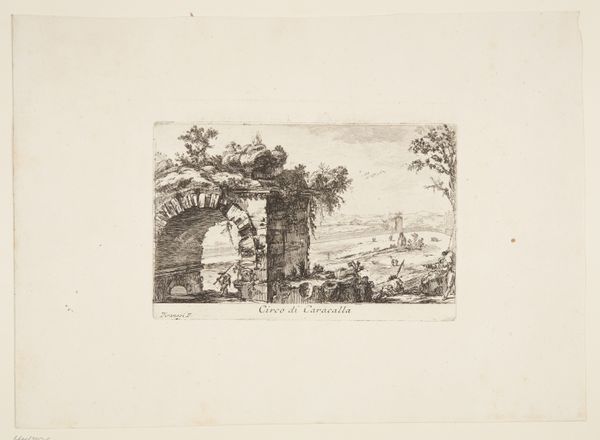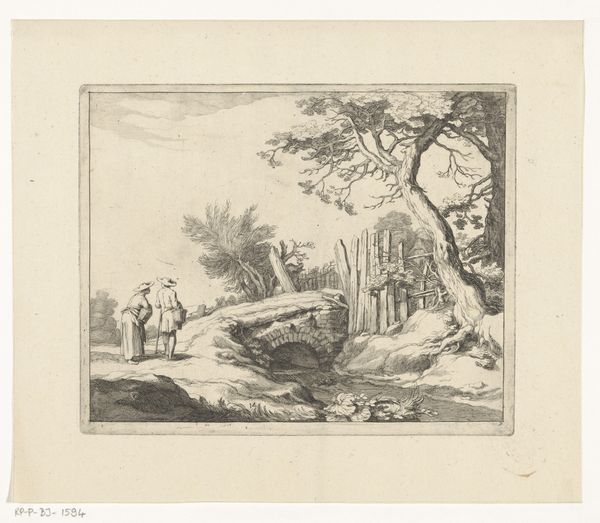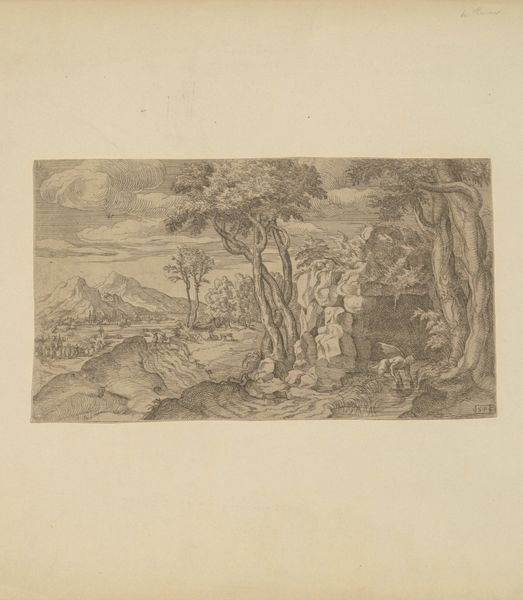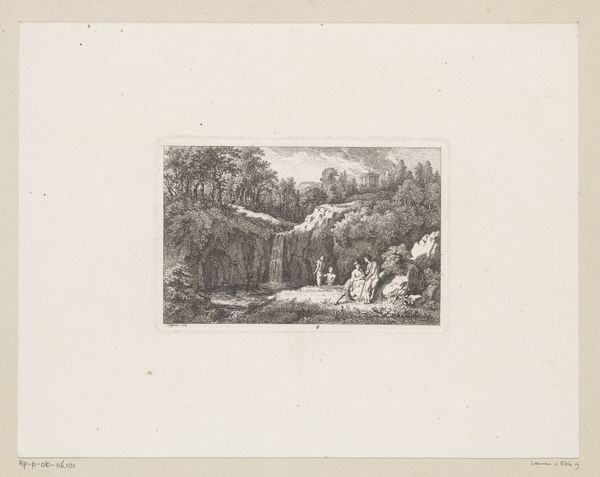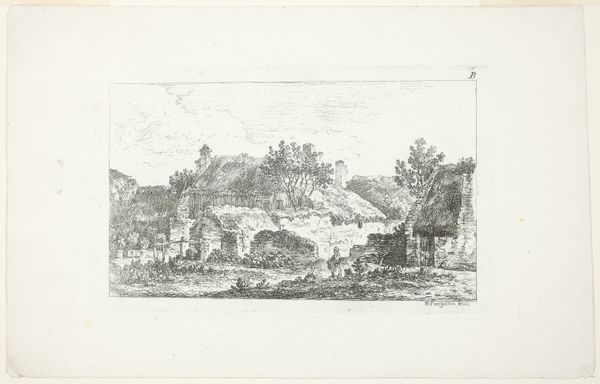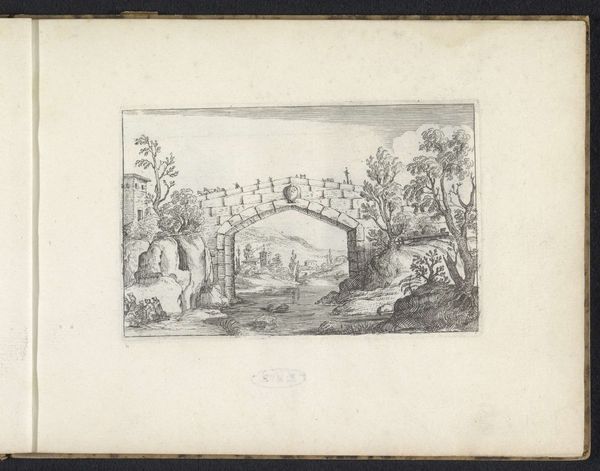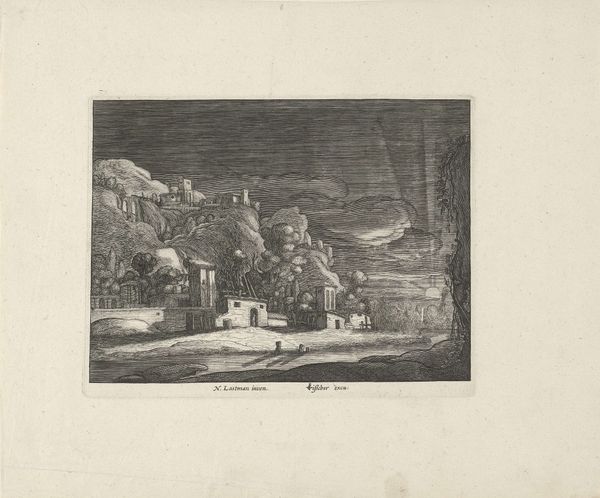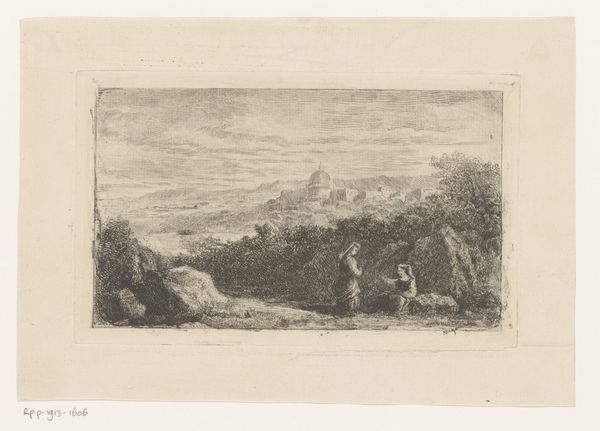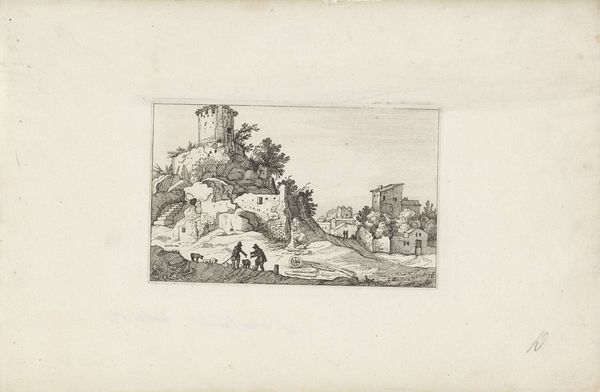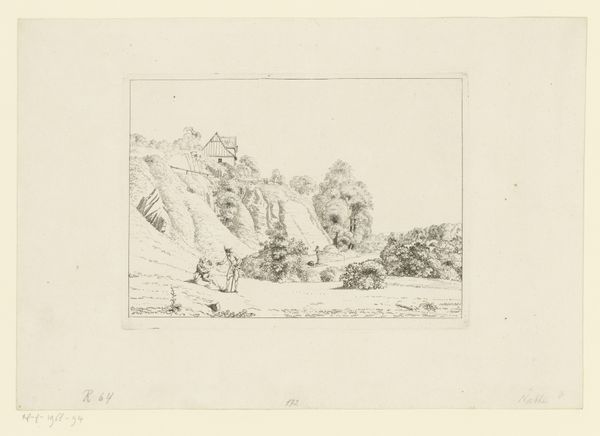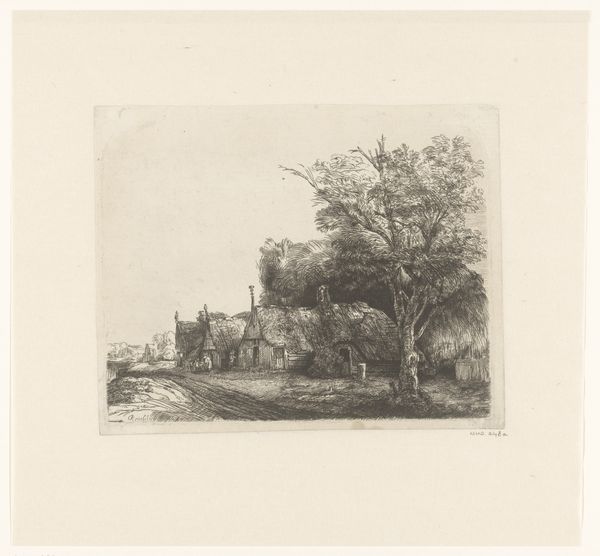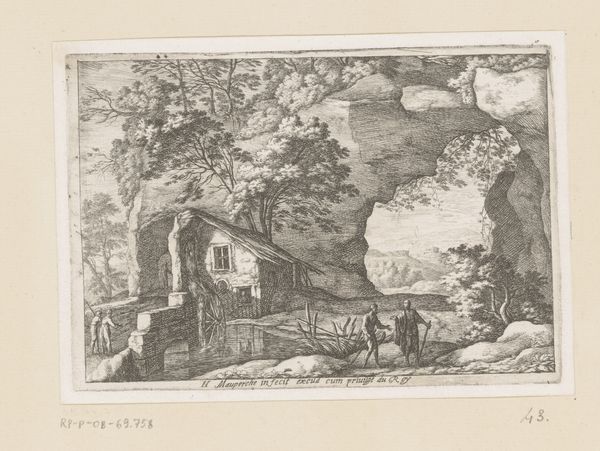
drawing, print, etching, engraving
#
drawing
# print
#
etching
#
old engraving style
#
landscape
#
genre-painting
#
northern-renaissance
#
engraving
Dimensions: height 95 mm, width 126 mm
Copyright: Rijks Museum: Open Domain
Jacob van der Heyden created this small landscape etching around the turn of the 17th century. It is made simply with a metal plate, acid, and ink – yet notice how van der Heyden coaxes so much detail from this modest process. Etching is an indirect method of engraving; instead of cutting directly into the metal, the artist protects certain areas with a resist, then bathes the plate in acid to bite away the unprotected parts. This creates recessed lines that hold ink, which is then transferred to paper under pressure. Here, the fineness of the lines, combined with the contrast between light and shadow, creates a sense of depth and atmosphere. In van der Heyden’s time, printmaking was essential for circulating images and information. This etching not only showcases the artist’s skill, but also reflects a growing interest in landscape as a subject. It reminds us that the appreciation of nature, like the techniques used to depict it, is always mediated by culture and labor. By valuing the artistry involved in its production, we recognize etching’s rightful place alongside other, more celebrated art forms.
Comments
No comments
Be the first to comment and join the conversation on the ultimate creative platform.
